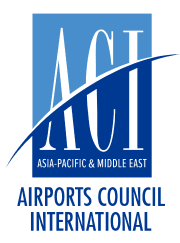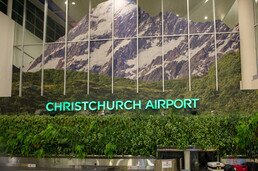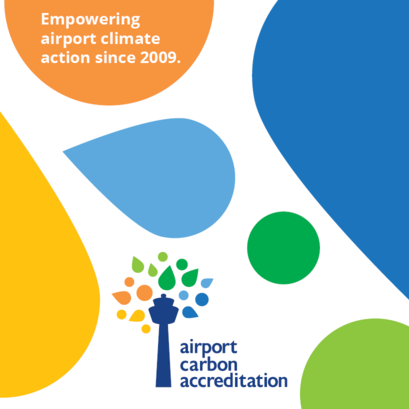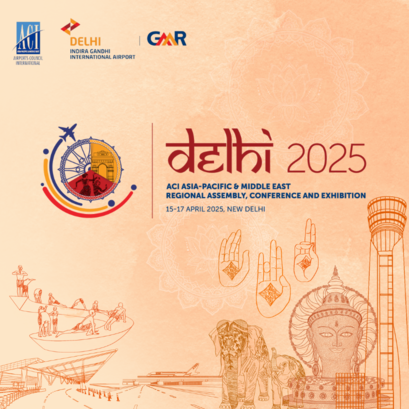View from the Top
- 2025-04-04
The year 2024 marked a new milestone for the aviation industry. Passenger traffic not only rebounded from the pandemic but also expected to have exceeded pre-pandemic levels, signaling a new era of growth. Asia-Pacific served an estimated 3.5 billion passengers or 3% increase over 2019, while the Middle East continued its upward trajectory, reaching an estimated 443 million passengers—a remarkable 9% growth over pre-pandemic levels.
Looking ahead, the momentum is set to continue. Between 2024 and 2043, global passenger traffic is expected to grow at a CAGR of 3.4%, reaching 17.7 billion passengers. By 2053, this figure is projected to nearly double to 22.3 billion, reinforcing the need for long-term strategic planning. Asia-Pacific and the Middle East will remain at the forefront of this expansion, with passenger traffic in the region expected to surge from 3.5 billion in 2023 to an estimated 8.7 billion by 2042.
Need for Infrastructure Development
Meeting this unprecedented demand requires substantial investment in airport infrastructure, ensuring they remain competitive in an evolving landscape.
To assess the region’s readiness, we are conducting a survey on planned capital expenditure investments for the period 2025–2035. This initiative will provide a comprehensive overview of the investment scale required to support the aviation sector’s growth over the next decade.
Enhancing Competitiveness in the Middle East
Recognising the Middle East’s growing role in global aviation, we kickstarted the year with a high-level workshop on the Competitiveness of Middle East Airports. This gathering of airport CEOs and key industry leaders covered critical strategies to enhance airport competitiveness. With representatives accounting for over 90% of the region’s air traffic, discussions focused on sustainability, technological innovation, and policy streamlining as key enablers of success.
A major takeaway from the workshop was the need to strengthen international tourism through a collaborative framework, ensuring equal engagement among all stakeholders, including airport operators. As a follow-up, we represented our member airports at the Coordination Meeting of Airports CEOs in the Gulf, hosted by Riyadh Airports Company. The meeting saw participation from leading airports across the region and addressed four key areas: Human Capital Development, ICT, Supply Chain, and Security & Safety.
Leading the Way in Sustainability
Sustainability remains at the core of our industry’s future. AM proud to state that we have made significant progress in our Net Zero Roadmap pilot programme. King Khalid International Airport (KKIA) in Riyadh, operated by Riyadh Airports, became the first airport in the region to undergo an onsite assessment under this initiative. With the assessment complete, expert teams are now analyzing data to develop a tailored Net Zero Roadmap for KKIA, offering a structured pathway to achieving net zero emissions. This initiative complements the Airport Carbon Accreditation (ACA) programme, providing airports with practical, actionable solutions to reduce their carbon footprint.
.jpg)
Enhancing Security & Knowledge Sharing
Collaboration remains essential to strengthening airport operations. Together with ICAO, we co-hosted the Landside Security Webinar, bringing together key stakeholders to address critical security challenges. The discussions focused on issues such as crowd management and infrastructure constraints, while also highlighting best practices in aviation safety.
Leadership Transition
ACI APAC & MID is stepping into a new chapter under the leadership of Mr. SGK Kishore, Executive Director and Chief Innovation Officer of GMR Hyderabad Airport, who has taken over as President. His leadership coincides with the upcoming Regional Assembly, Conference, and Exhibition, to be held in New Delhi from 15-17 April 2025 and hosted by GMR Delhi Airport. India, as a dynamic aviation market, presents a prime opportunity to bring global aviation leaders together to discuss the future of the industry.
Further strengthening capacity building efforts, we are organizing a Workshop on Environmental Communications to equip airport communications teams with strategies to address sustainability concerns and enhance collaboration between departments for credible and transparent messaging.
Expanding Air Connectivity
Our Air Connectivity programme continues to serve as a valuable benchmark for airports, helping them assess and improve their connectivity rankings. To further expand the programme’s scope, we are co-organizing the Air Connectivity Conference in Shanghai on 28 May 2025, in partnership with the China Civil Airports Association, and hosted by Shanghai Airport Authority. This event will provide a platform for airports to explore strategies for enhancing air connectivity.
.jpg)
Looking Ahead
The aviation industry is at the cusp of massive growth, and our role as industry association is more critical than ever. We remain committed to driving sustainable growth, strengthening regional collaboration, and ensuring that our airports are well-prepared for the future. Through capacity building and knowledge sharing, we can collectively make the aviation industry resilient, competitive, and primed for long-term success.
- CATEGORY
- COUNTRY / AREA
- Hong Kong SAR
- AUTHOR
- ACI Asia-Pacific & Middle East
